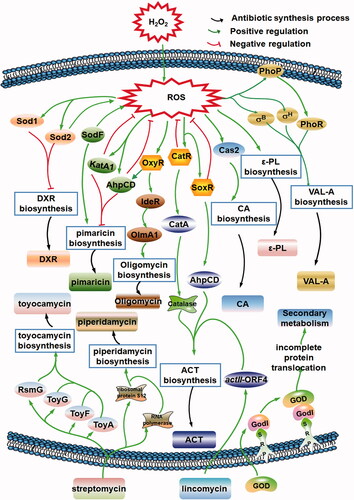Figures & data
Figure 1. The elicitors DMSO and ethanol and their regulation of antibiotic production in Streptomyces. DMSO and ethanol are effective elicitors of secondary metabolism in Streptomyces and exert their effects by changing the membrane structure, affecting steady-state growth, and regulating associated genes and carbon metabolism. A-CoA: acetyl-CoA; Am-CoA: allylmalonyl-CoA; CIT: citrate; FK506: tacrolimus; DMSO: dimethyl sulfoxide; FK520: ascomycin; Glu-6-P: glucose 6-phosphate; HK-RR: histidine kinase–response regulator; Ile: isoleucine; M-CoA: malonyl-CoA; MET: methionine; MM-CoA: methylmalonyl-CoA; MOM-CoA: methoxymalonyl-CoA; OAA: oxaloacetate; P-CoA: propionyl-CoA; PEP: phosphoenolpyruvic acid; SP: sedoheptulose 7-phosphate; SUCC: succinic acid; TCA: tricarboxylic acid; Val-A: validamycin A; 1,3-DPG: 1,3-bisphosphoglyceric acid.
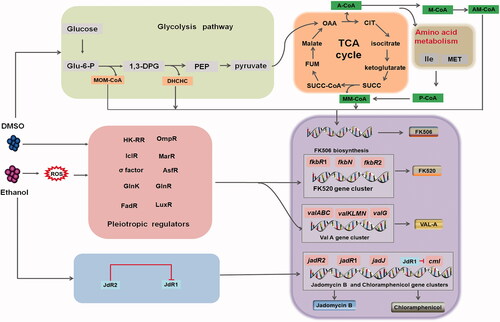
Figure 2. Enzymes and enzyme inhibitors can act as elicitors to activate or enhance antibiotic production in Streptomyces. ACP: acyl carrier protein; AT: acyltransferase; DH: β-hydroxyacyl-thioester dehydratase; KR: β-ketoacyl-ACP reductase; KS: β-ketoacyl-ACP synthase.
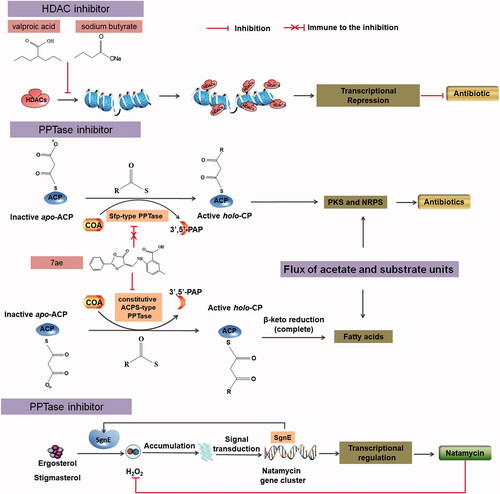
Figure 3. pH shock regulation in Streptomyces. Temperature shifts cause changes in antibiotic metabolism by influencing the TCA cycle, energy metabolism, and TCS. ACT: actinorhodin; CoQ: coenzyme Q; Cyt: cytochrome; Fe-S: iron–sulfur protein; FP: flavin proteases; P: phosphate group; TCA: tricarboxylic acid cycle; ε-PL: ε-poly-l-lysine; TCS: two-component regulatory system.
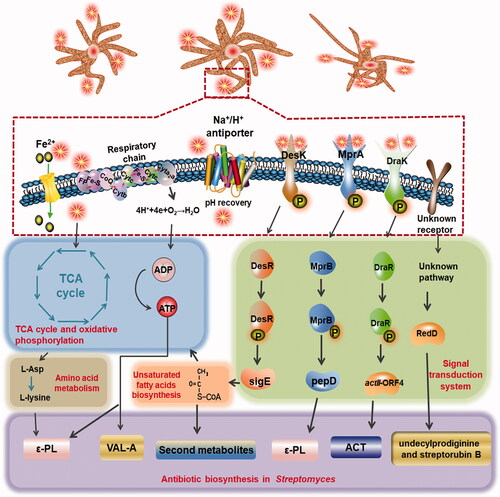
Table 1. Influence of rare earth elements (REEs) on antibiotic production.
Table 2. Influence of nanoparticles on antibiotic production.
Table 3. Influence of co-culture on antibiotic production.
Figure 4. Complex communities induce unnatural antibiotic production. Fungal cell fragments, substances involved in interactions, and physical contact with Streptomyces species can enhance antibiotic biosynthesis.
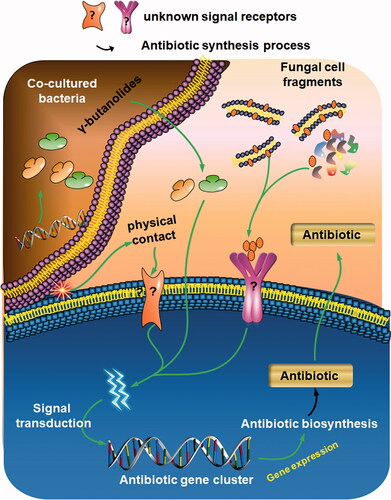
Figure 5. ROS influence secondary metabolism as intercellular and intracellular signals. ROS may act as intercommunal and intracellular signals to mediate secondary metabolism in Streptomyces. ACT: actinorhodin; CA: clavulanic acid; DXR: doxorubicin; God: goadsporin; ROS: reactive oxygen species; Val-A: validamycin A; ε-PL: ε-poly-l-lysine.
